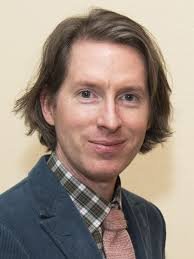
Wes Anderson (born May 1, 1969) is an American filmmaker known for his highly distinctive and visually unique style. His films are often marked by symmetrical compositions, vibrant color palettes, quirky characters, and whimsical storytelling. Anderson’s work is often associated with a deep sense of nostalgia, elaborate set designs, and a focus on the themes of family, loss, and relationships.
Early Life and Education:
Wesley Wales Anderson was born in Houston, Texas, to Melverna, an archaeologist, and Texas oil executive W. Anderson. He has two brothers, one of whom, Eric Chase Anderson, became a key collaborator in Anderson’s filmmaking career, particularly in the areas of set design and illustration.
Anderson attended the University of Texas at Austin, where he studied philosophy and film. While at university, he met future collaborators Owen Wilson and Luke Wilson, both of whom would play crucial roles in his early films.
Early Career and Breakthrough:
Anderson’s career began with short films, the most notable being “Bottle Rocket” (1994). This film, co-written with his college friend Owen Wilson, was Anderson’s feature film debut. While the film initially struggled to find an audience, it garnered critical attention and began to establish Anderson’s distinctive voice. The film was expanded from a short that Anderson had made in college, and though it was only a modest success, it laid the groundwork for his future career.
Major Films and Themes:
- “Rushmore” (1998): Anderson’s breakthrough film, “Rushmore”, starred Bill Murray, Jason Schwartzman, and Owen Wilson. The film centers on an eccentric and brilliant high school student, Max Fischer (Schwartzman), and his complicated relationship with a rich industrialist (Murray). “Rushmore” marks the beginning of Anderson’s signature style: a quirky, highly stylized world filled with oddball characters, vibrant colors, and rich, layered emotional storytelling. The film was critically acclaimed and solidified Anderson’s reputation as a director to watch.
- “The Royal Tenenbaums” (2001): One of Anderson’s most beloved films, “The Royal Tenenbaums” follows the dysfunctional Tenenbaum family as they reunite after years of estrangement. The film’s large ensemble cast, including Gene Hackman, Gwyneth Paltrow, Ben Stiller, and Owen Wilson, is a hallmark of Anderson’s approach to storytelling—focusing on a large group of characters, all with their own distinct quirks and backstories. The film blends dry humor, melancholy, and visual extravagance, and it became a cultural touchstone in the early 2000s. It was nominated for an Academy Award for Best Original Screenplay.
- “The Life Aquatic with Steve Zissou” (2004): “The Life Aquatic” features Bill Murray as the eccentric oceanographer Steve Zissou, who embarks on a dangerous quest to hunt down the elusive jaguar shark. The film explores themes of adventure, legacy, and friendship, all within a visually inventive, nautical world. Anderson’s collaboration with Murray continued to evolve in this film, further cementing their creative partnership. The film’s use of stop-motion animation and the whimsical design of the fictional world is a notable element of Anderson’s aesthetic.
- “The Darjeeling Limited” (2007): In “The Darjeeling Limited”, Anderson tells the story of three brothers (played by Owen Wilson, Adrien Brody, and Jason Schwartzman) who travel across India in an attempt to reconnect after the death of their father. The film deals with themes of family, grief, and reconciliation. As with many of Anderson’s films, “The Darjeeling Limited” mixes comedy with more profound emotional moments, all set against visually rich and striking locations. Anderson’s fascination with travel and the cultural experiences associated with it plays a key role in the film’s aesthetic and thematic elements.
- “Fantastic Mr. Fox” (2009): Anderson’s first foray into stop-motion animation, “Fantastic Mr. Fox”, is based on Roald Dahl’s beloved children’s book. The film stars George Clooney as the voice of the titular Mr. Fox, a clever and mischievous animal who goes on a heist to outwit the local farmers. The film’s stop-motion animation is painstakingly detailed, with a unique visual charm and Anderson’s trademark style of humor. “Fantastic Mr. Fox” was well-received by critics and audiences alike and was nominated for Best Animated Feature at the Academy Awards.
- “Moonrise Kingdom” (2012): Set in the 1960s, “Moonrise Kingdom” tells the story of two young lovers (played by Jared Gilman and Kara Hayward) who run away together, sparking a search party in their small coastal town. The film is marked by its dreamy aesthetic, whimsical performances, and focus on the innocence and complexity of childhood love. “Moonrise Kingdom” received widespread critical acclaim, including a Best Original Screenplay nomination at the Oscars.
- “The Grand Budapest Hotel” (2014): “The Grand Budapest Hotel” is perhaps Anderson’s most visually intricate film, featuring an ensemble cast including Ralph Fiennes, F. Murray Abraham, Saoirse Ronan, and Bill Murray. Set in a fictional European country between the two World Wars, the film follows the adventures of the hotel’s concierge, Monsieur Gustave H., and his young protégé. Known for its vibrant color schemes, meticulous set design, and clever storytelling, the film received multiple Academy Award nominations and won four, including Best Production Design.
- “Isle of Dogs” (2018): Anderson’s second stop-motion animated feature, “Isle of Dogs”, takes place in a dystopian future where all dogs have been exiled to a trash island due to a disease outbreak. The story follows a young boy’s search for his lost dog, accompanied by a group of loyal canines. Like “Fantastic Mr. Fox”, “Isle of Dogs” is a visually stunning film, filled with Anderson’s characteristic attention to detail, humor, and heart. It received critical praise and was nominated for Best Animated Feature at the Oscars.
- “The French Dispatch” (2021): Anderson’s most recent film, “The French Dispatch”, is an anthology film set in a fictional French city and based around the last issue of an American magazine. Featuring an all-star cast that includes Bill Murray, Frances McDormand, Timothée Chalamet, and Tilda Swinton, the film is a love letter to journalists and the written word. Like much of Anderson’s work, it combines dark humor, poignancy, and a vibrant visual aesthetic to tell a multi-layered narrative.
Stylistic Elements and Themes:
- Visual Aesthetics: Anderson’s films are known for their highly stylized visual presentation. Symmetry, meticulously crafted sets, pastel color palettes, and carefully composed shots are trademarks of his films. His works often resemble dioramas or elaborate storybooks, adding to the whimsical quality of his storytelling.
- Characterization: Anderson’s characters are frequently outsiders or eccentrics who are grappling with family dysfunction, personal loss, or an overwhelming desire for adventure or purpose. His characters often come across as emotionally vulnerable, creating a unique blend of melancholy and humor.
- Narrative Structure: Many of Anderson’s films have unconventional narratives, frequently using non-linear storytelling or splitting a story into multiple perspectives. His films often feel like fables, blending the fantastical with the real.
- Quirky Humor: Anderson’s humor is dry, ironic, and often dark. He has a particular knack for blending absurd situations with poignant, emotional moments, which makes his films resonate deeply despite their humor and whimsical tones.
Collaborations:
Anderson has built long-lasting relationships with a group of actors who frequently appear in his films. Key collaborators include:
- Bill Murray: Murray has appeared in almost every Anderson film since “Rushmore” (1998).
- Owen Wilson: Wilson is not only a frequent actor in Anderson’s films, but also a writer and creative partner in many of Anderson’s screenplays.
- Jason Schwartzman: Schwartzman has been a regular in Anderson’s ensemble casts, starring in “Rushmore”, “The Darjeeling Limited”, and others.
- Tilda Swinton, Frances McDormand, and Saoirse Ronan: These actors are also frequent collaborators, known for their roles in Anderson’s later films
SOCIAL MEDIA LINKS :
YOUTUBE : https://www.youtube.com/watch?v=tMOq7jeC6Yk&pp=ygUWV2VzIEFuZGVyc29uIElOVEVSVklFVw%3D%3D
INSTAGRAM : https://www.instagram.com/wesandersonplanet/?hl=en




